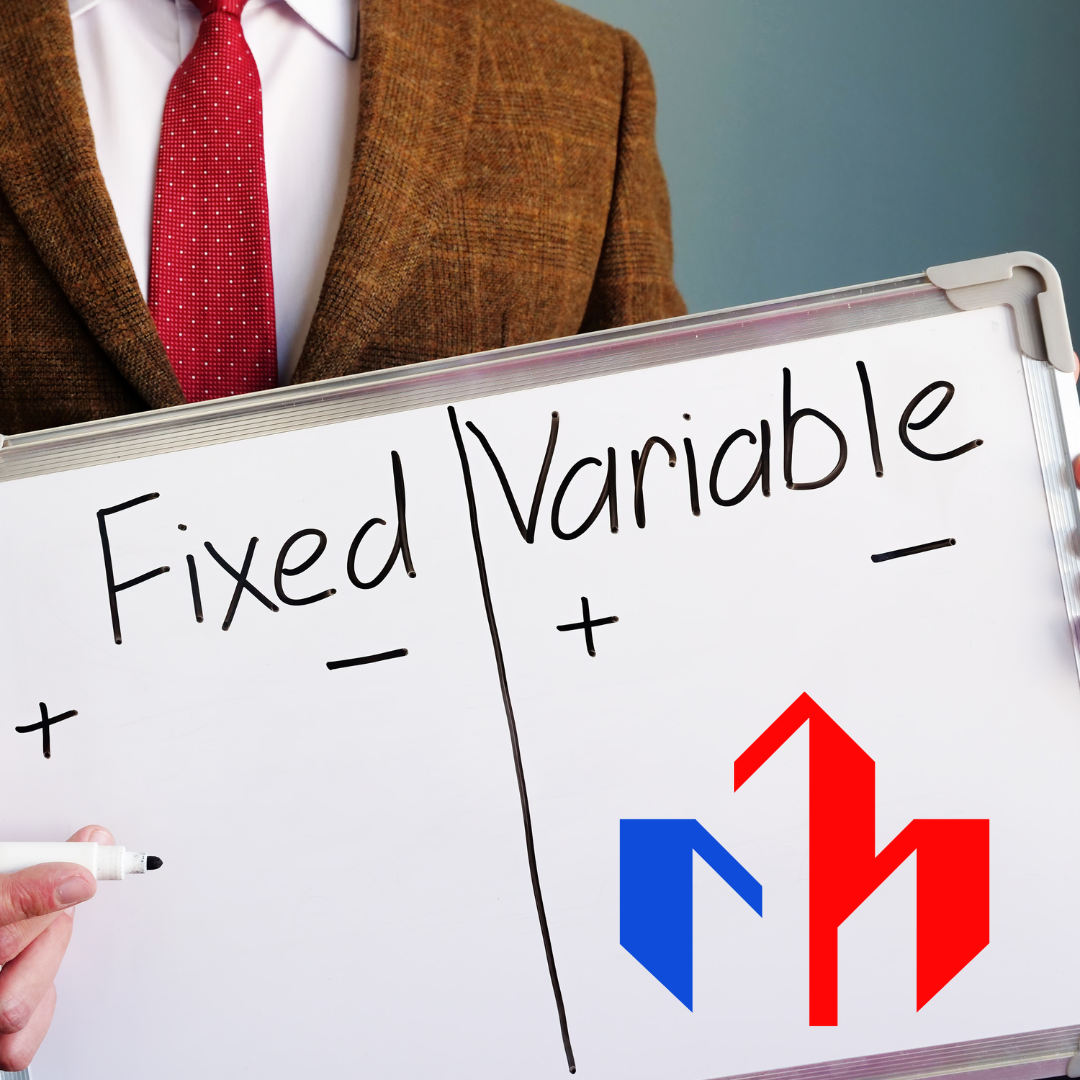Mortgage Basics
Are you considering buying a home, but unsure of how to finance it? Mortgage financing can be a confusing and daunting process, but it doesn’t have to be! In this blog series, we’ll be breaking down mortgage basics so that you can make informed decisions about your home-buying journey.
Mortgage Types
Fixed-rate: A mortgage where the interest rate stays the same for a set period of time, typically anywhere from five to 10 years. At the end of that period, the rate is reset to whatever prevailing rates are.
Adjustable rate: A mortgage in which the interest rate is fixed for a set period of time, typically five to seven years, and then readjusts annually according to market conditions.
Balloon mortgage: A mortgage that has level monthly payments for a set period of time, typically five to seven years, and then one large payment at the end of the loan term.
Mortgage Process
The mortgage process typically starts with a loan application and goes through several stages of processing, verification, and approval. Depending on your circumstances, the process can take anywhere from a few weeks to a few months.
Here’s a general overview of what you can expect:
-Loan application: You’ll complete a loan application (either online or in person) and provide information about your finances, employment history, and debts.
-Processing: Once you submit your loan application, it will go through a series of checks by loan processors and underwriters. They will verify your information and make sure you meet the lending requirements.
-Approval: If everything looks good, the lender will approve your loan and you’ll be issued a commitment letter outlining the terms of the loan.
-Closing: The final step is closing on the loan, which is when you sign the official documentation and get the keys to your new home!
Mortgage Terms
While there are many common features of mortgages, there can be significant variations in the terms offered by different lenders. It’s important to understand the terms of your mortgage so that you can make the best decisions for your financial future.
Some of the most important aspects of a mortgage to consider are:
– principal: this is the amount of money you borrow from the lender and is typically the purchase price of the home minus any down payment;
– interest rate: this is the rate charged by the lender for borrowing money and is typically a percentage of the principal;
– term: this is the length of time you have to repay the loan, typically ranging from 15 to 30 years;
– amortization: this is how your payments are applied to both the principal and interest, typically in equal amounts over the term of the loan;
– prepayment privileges: this allows you to make additional payments on your mortgage without penalty, which can save you money in interest over time; and,
– portability: this allows you to transfer your mortgage to a new property without incurring penalties, which can be helpful if you’re moving.
Mortgage Down Payments
The amount of money you put down on your home has a direct effect on your monthly mortgage payment and your overall interest costs. A higher down payment means a lower monthly payment and vice versa.
There are two types of mortgage down payments: the conventional (also known as the “regular”) down payment, and the government-backed down payment. Each has its own set of rules, benefits, and drawbacks.
The conventional down payment is usually 20% of the purchase price of the home, though it can be as low as 3% for some borrowers. The government-backed down payment is typically lower, at around 3.5%.
Benefits of higher down payment:
– Lower monthly payments
– Lower overall interest costs
– More equity in your home
Drawbacks of higher down payment:
– Takes longer to save up for
– May tie up a large amount of money that could be used for other purposes
Mortgage Insurance
Mortgage insurance protects the lender or the buyer in the event of a default on a loan. Mortgage insurance is required on all FHA loans and on conventional loans with down payments of less than 20 percent. Mortgage insurance is also available on VA loans, but it is not required.
There are two types of mortgage insurance: private mortgage insurance (PMI) and mortgage insurance premium (MIP). PMI is only available on conventional loans, whereas MIP is available on both FHA and VA loans.
Mortgage insurance typically costs between 0.5 percent and 1 percent of the loan amount per year. Homeowners who pay PMI are typically required to pay an upfront premium as well as an annual premium. For FHA loans, both the upfront premium and annual premium are financed into the loan amount. For VA loans, there is no upfront premium; however, the annual premium is usually rolled into the loan amount or paid separately by the borrower.
Mortgage Interest Rates
Mortgage interest rates are the rate of interest charged on a mortgage. They are determined by the lender in most cases and can be either fixed, where they remain the same for the term of the mortgage, or variable, where they fluctuate with a benchmark interest rate.
Mortgage interest rates have a direct impact on both how much you end up paying for your home and how much you’ll pay each month. When you’re shopping for a home and comparing mortgage rates, you’ll want to pay attention to both the interest rate and the annual percentage rate (APR). The APR will give you a better sense of how much the loan will cost you.
Mortgage Points
Mortgage points, also known as discount points, are a type of loan origination fee that homebuyers can pay to reduce the interest rate on their mortgage. One point equals 1 percent of the loan amount. For example, if you’re taking out a $200,000 mortgage and you pay two points (2 percent), your point fee would be $4,000.
Paying points may make sense if you have the cash available and you plan to stay in your home for a long time. The longer you stay in your home, the more likely it is that you will save money on interest by paying points. In general, it takes about three to five years for the savings from lower interest payments to exceed the cost of the points.
You can also use mortgage points as a negotiating tool with your lender. If you’re not sure whether paying points makes sense for you, ask your lender how many points they would require for a lower interest rate.
Mortgage Pre-Approval
Mortgage pre-approval is an evaluation by a lender that determines if you would qualify for a home loan. It also shows how much the lender would be willing to lend you. Getting pre-approved is the first step toward getting a mortgage, but it does not guarantee a loan.
| MortgagesToGo.ca | |
| Website | Mortgagestogo.ca |
| Services | New purchase, refinancing and equity takeouts, mortgage transfer, mortgage renewal Rates |
| Rates | https://mortgagestogo.ca/mortgage-rates/ |
| Address | 12 Royal Vista Way NW #1110, Calgary, AB T3R 0N2 |
| Contact Details | (888) 888-5998 |
| Operating Hours | Monday – Friday 9 AM – 5 PM |








